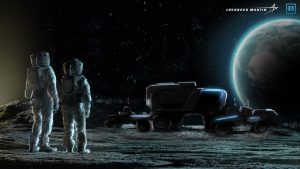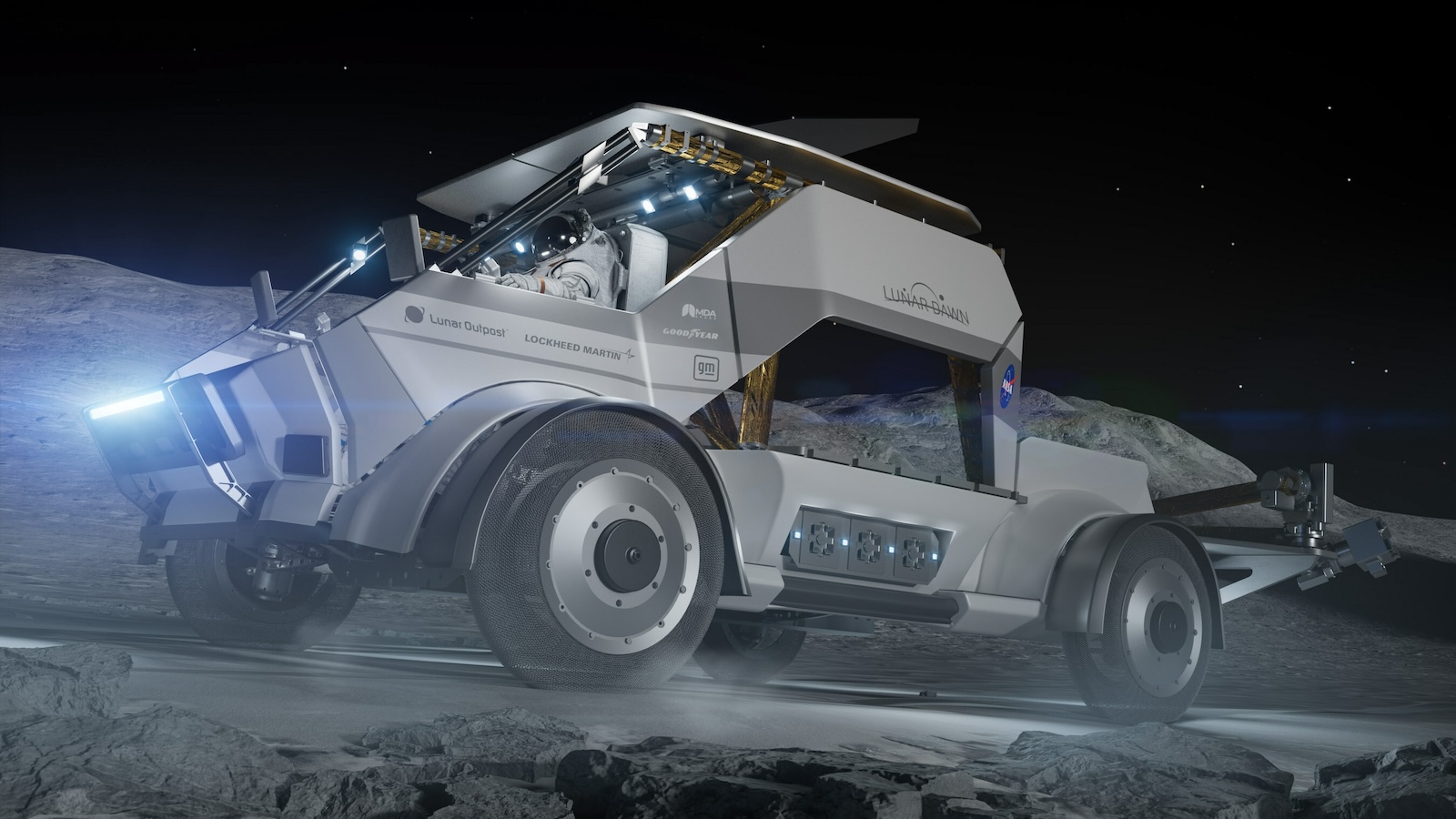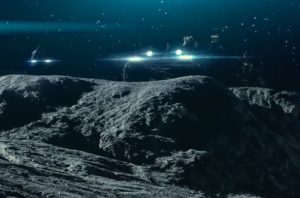General Motors is headed back to the moon — maybe. It is providing Ultium batteries as well as some experience with chassis and suspension development for the next-generation lunar terrain vehicle that just got the green light from NASA.

The U.S. space agency just awarded a Lunar Terrain Vehicle Services Contract to the Lunar Dawn team, including General Motors.
The U.S. space agency just awarded a Lunar Terrain Vehicle Services Contract to the Lunar Dawn team, which is a collection of companies working together to put together the next lunar buggy, which will be used for the Artemis V mission, which will be sometime after 2026.
The Artemis I campaign began in November 2022. Artemis III won’t begin any earlier than September 2026, according to NASA’s website.
The group is led by Lunar Outpost, which specializes in advanced spacecraft and robotic systems, and features some familiar names such as Lockheed Martin, Goodyear and, of course, GM. The group is one of three that received contracts. The others are Intuitive Machines and Venturi Astrolab.
“GM has a rich legacy supporting our nation’s space program, and we are thrilled to support American astronauts once again as they embark on this important mission to the Moon,” GM said in a email to Headlight.News.
NASA will acquire the LTV as a service from industry. The indefinite-delivery/indefinite-quantity, milestone-based Lunar Terrain Vehicle Services contract with firm-fixed-price task orders has a combined maximum potential value of $4.6 billion for all awards, the agency noted.
To the moon!

A new generation of lunar rovers under development by Lockheed Martin and GM could be used by Artemis astronauts to extend and enhance the exploration of the surface of the moon.
The aim of new Lunar Terrain Vehicle, or LTV, is to allow astronauts to explore the moon’s surface and conduct experiments in ways previously not imaginable. While GM playing a role with its electric vehicle battery technology as well as its decades of knowledge of automotive chassis and suspensive technology.
“We look forward to the development of the Artemis generation lunar exploration vehicle to help us advance what we learn at the Moon,” said Vanessa Wyche, director of NASA’s Johnson Space Center in Houston, in a statement.
“This vehicle will greatly increase our astronauts’ ability to explore and conduct science on the lunar surface while also serving as a science platform between crewed missions.”
More GM Stories
- General Motors Announces Partnership with Magna and Wipro Limited to Create SDVerse
- GM, Honda Begin Joint Production of Hydrogen Fuel Cells
- GM Recalls 820,000 Full-Size Pickups to Fix Tailgate Issues
Tough sled
Which means it’s going to need to meet some rather stringent requirements, starting with handling the extreme conditions at the Moon’s South Pole, where temperatures get as loas -280 degrees Fahrenheit. The LTV needs feature advanced technologies for power management, autonomous driving, and state of the art communications and navigation systems.

The lunar vehicle must be able to handle difficult conditions, such as the -280 degree Fahrenheit temperatures at the lunar South Pole.
NASA, according to reports, is looking for a vehicle to be able to travel about 600 miles on a charge and about 6,000 miles in a 42-day period. Officials said NASA crews will use the LTV “to explore, transport scientific equipment, and collect samples of the lunar surface, much farther than they could on foot, enabling increased science returns.”
When crews are not on the Moon, the LTV will operate remotely to support NASA’s scientific objectives as needed. Outside those times, the provider will have the ability to use their LTV for commercial lunar surface activities unrelated to NASA missions.
Been there, done that
If the Lunar Dawn team wins the contract, it won’t be GM’s first trip to the moon. The company helped design and produce the wheels, motor, and suspension of NASA’s Lunar Roving Vehicle during the Apollo Program.
It developed, tested, integrated and produced the inertial guidance and navigation systems for the series, in particular Apollo that put astronauts on the moon for the first time in 1969.
Additionally, it helped to develop the Apollo Lunar Roving Vehicle (LRV) for Apollo 15-17. The all-electric LRV never drove farther away from NASA’s based than 4.7 miles during its time on the moon’s surface. Fortunately, GM’s electric vehicle technology has advanced substantially since then.
Perhaps just as importantly, the company’s already begun testing the batteries in space with a full use run expected next year. Officials aren’t limiting their use to NASA, instead are looking to work with Blue Origin, Amazon founder Jeff Bezos’ private space company, as well as SpaceX, owned by Tesla CEO Elon Musk.









0 Comments